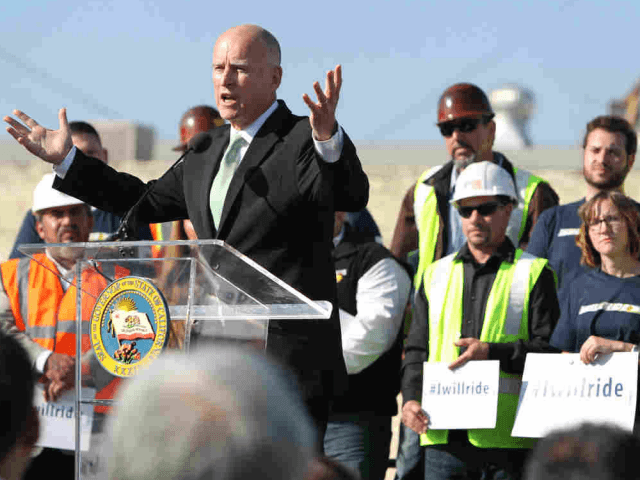The infamous California High-Speed Rail may take an extra 15 years to build, travel underground through several very dangerous geologic faults, and rise in cost to $93 billion.
Voters passed Proposition 1A, titled the “Safe, Reliable High-Speed Passenger Train Bond Act for the 21st Century,” in November 2008. Since that time, it has become clear that riding under up to 36 miles of the San Gabriel and Tehachapi Mountains will be dangerous, unreliable and slow–if the project it is ever completed.
The original estimates in the bond disclosure statement promised the cost would be only $33 billion, with a 2010 construction start and full operation by 2222. But when the project actually broke ground earlier this year, the official estimate was raised to $68.4 billion and a 2028 completion for the Los Angeles to San Francisco project.
The project route runs between the San Gabriel and the San Andreas faults. Since being formed 1.7 billion years ago, the Pacific tectonic plate has relentlessly grinded 200 miles northward against the North American tectonic plate.
Natural tectonic movements will continue to create a highly fractured and constantly changing underground spiderweb of granite blocks and crevasses. There are also numerous vertical “slip faults” moving up and down, plus sub-faults moving horizontally east and west. Geologists compare the mountainous area the train will pass through to a game of pick-up sticks, where every few years there is a tremendous collapse.
The High-Speed Rail Authority (HSRA) estimates mountain tunneling will begin in 2019. The multi-bladed tunnel boring machines will stretch up to 600 feet long and carry a crew of 20. They are expected to make 100 to 200 feet of progress by operating 20 hours a day.
But according to a Los Angeles Times interview with MIT Professor of Civil Engineering Herbert Einstein, that projection assumes optimal mountain conditions for the dig. He expects California’s maze of fractured granite rock and fault lines will slow progress to 10 to 20 feet a day. Boring at 20 feet a day and working 261 days a year, the tunnel would take seven years to complete by 2026. At 10 feet a day, completion date would double to 2033.
These added time delays to bore through the southern mountains will add another $25 billion in expenses, pushing the bullet train’s total costs closer to $93 billion.
The current cumulative funding for the California “bullet train” is about $26 billion, and is composed of a $9-billion voter approved rail bond issue, $3.2 billion in Obama administration grants and the legislature’s allocation of $250 million to $1 billion a year in cap-and-trade revenues. That means the project is about $67 billion under-funded.
The current distance and driving time by car from Burbank to San Jose is 383 miles and takes 5 hours and 47 minutes, according to Google Maps. The California High-Speed Rail promised that its 422 mile trip would take 2 hours and 40 minutes, versus the current Amtrak time of 12 to 15 hours (not counting frequent delays).
But the rosy estimate unrealistically assumes the “bullet train” would race non-stop at 110 miles an hour in the southern mountains and 220 miles an hour in the Los Angeles basin, the Central Valley and the Bay Area. The CA.gov website discloses that the train will make 6 station stops, adding at least an hour to the trip time. The HSRA also plans to save $30 billion in additional costs by shifting to a “blended” plan that uses the existing 50-mile-per-hour commuter tracks in LA and the Bay Area, adding another hour.
If there are no other cost increases and the government train always runs on time, a Los Angeles-to-San Francisco trip on the “bullet train” will only save 1 hour and 7 minutes in driving time, create a $67 billion unfunded deficit, and provide customers the thrill ride of traveling underground through some of the most active earthquake faults on the planet.

COMMENTS
Please let us know if you're having issues with commenting.